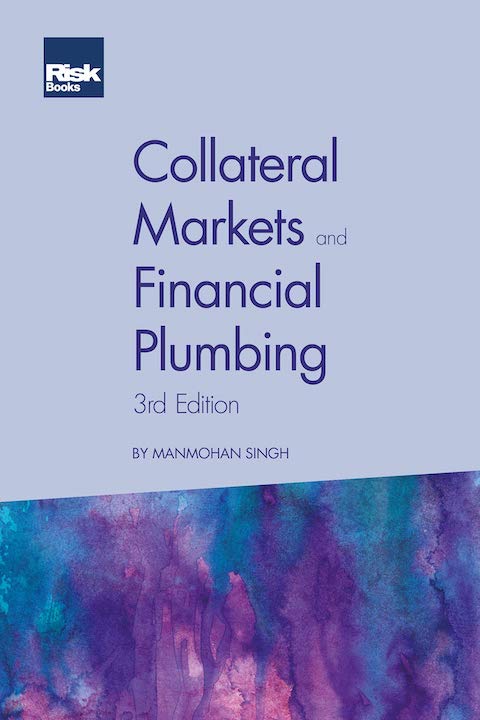
“The term collateral refers to an asset that a lender accepts as security for a loan.”
~ Julia Kagan, Investopedia
By Catherine Austin Fitts
This is a book on the global collateral system by a senior economist at the International Monetary Fund (IMF) in Washington, Manmohan Singh. This is a serious review by a technician—so I would not attempt it unless you have a financial background and are sufficiently interested to plow through the charts, graphs, and statistics involved.
The author’s main thesis is that liquidity in the global financial system is constrained by a shortage of quality collateral and an inability to rehypothecate collateral sufficiently. Indeed, rehypothecation has fallen by approximately a third—from 3x + before the Global Financial Crisis to 2x +.
This is a phenomenally complex, obtuse way of saying:
- There are far more fixed-income securities and loans outstanding than there are productive assets and populations to support them.
- Many of the financial institutions that are trading and holding these securities and loans or title to the related real assets do not trust each other, often for good reason.
- There is a great deal of fraudulent or overvalued collateral in the global collateral system.
This situation is obvious to anyone who has ever looked into the details of mortgage fraud or stories like Wells Fargo faking customer accounts. What is new is writing a long, complex book trying to describe and solve the problem without talking turkey about the actual problem—this is a statistical version of what I call “pretzel talk.” In my experience, most pretzel talk comes from Washington and the people paid by Washington to spin and expertize for them.
The fundamental problem in the global collateral system is fraudulent collateral and fraudulent practices, often created by or with the help of parties that have sovereign immunities, making it difficult if not impossible to enforce contracts, stop fraudulent behavior, and prosecute perpetrators. This apparently is not something to be addressed by IMF economists—their employer being a significant contributor to the problem.
On each of the Solari Report’s quarterly Wrap Ups, Dr. Joseph Farrell speculates on whether the push to land on asteroids is to use them to shore up the global collateral system. I am sure it will come up this weekend when Dr. Farrell and I record Part I of News Trends & Stories for our 3rd Quarter 2022 Wrap Up. Whatever challenges we may have in communicating what is happening in the global space program, it is not anywhere near as difficult as trying to explain what is taking place in the global collateral system within the official narrative.
Given what is going on in the Going Direct Reset and in the global derivatives, fixed income, and currency markets, the pressure in the global collateral system is growing more explosive every day. Mr. Singh thus has a very difficult job. However, successfully navigating the road ahead will require real intelligence rather than an official narrative bubbled with pretzel talk.
The situation reminds me of that great line from A Course in Miracles:
“Nothing real can be lost. Nothing unreal is real.”
Buy the Book:
Collateral Markets and Financial Plumbing by Manmohan Singh
From the Solari Site:
Book Review: Bailout by Neil Barofsky
Related Reading:
views: 4
